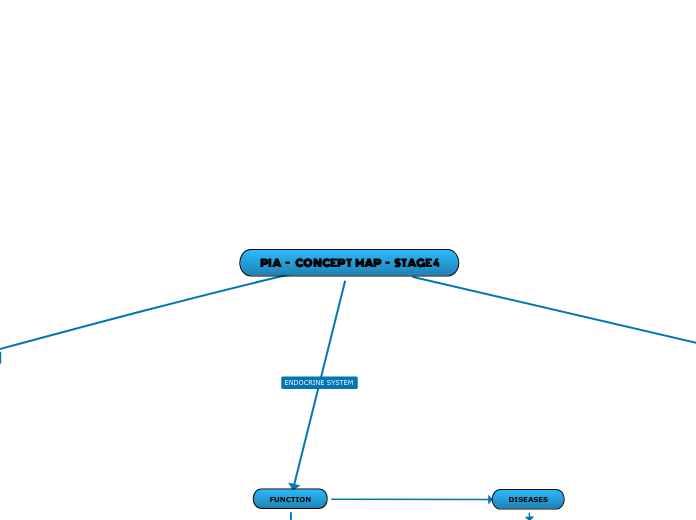PIA - CONCEPT MAP - STAGE 4
CHLAMYDIA: caused by the bacterium chlamydia trachomatis.
GENITAL HERPES: it is an incurable STD caused by herpes virus type 2. Produces pianful blisters.
AIDS: caused by human immunodeficiency virus. Its contagion occurs through sexual exposure to semen or vaginal fluids of infected people.
GONORRHEA: caused by neisseria gonorrhoeae. Highly contagious.
GENITAL WARTS: caused by human papillomavirus which is sexually transmitted and is not curable.
HEPATITIS TYPE B: It's spread sexually and also by the use of contaminated syringes, blood transfusions, saliva and tears.
SYPHILIS: caused by Treponema pallidum. It is contagious not only by sexual transmission but also by blood transfusions.
MOLLUSCUM CONTAGIOSUM: caused by molluscum contagiosum virus, produces lesions in the skin.
Both female and male systems are responsible for producing the gametes or sex cells that will give rise to a new being.
This system consists of the gonads, ovaries, and testes. It also consists of the organs that participate in the intercourse: the penis and the vagina.
MALE REPRODUCTIVE SYSTEM
consists of the testicles, accessory glands and the penis.
a copulatory organ that has the urethra which is the route for ejaculation and emission of urine.
located around the prostatic urethra. Its secretion protects the sperm and keeps them viable.
the semen is made up of the sperm and the secretions of these glands
their function is to protect and drive sperm from the testicle to the urethra.
located in the scrotal bags that keep them out of the abdominal cavity. These are covered by a fibrous layer and testosterone is produced in here.
FEMALE REPRODUCTIVE SYSTEM
Composed of the internal genital organs
organs located in the anterior part of the thorax. Milk producing cells that are organized into structures in the form of small sacs called alveoli
tubular organ of about 10cm long. Its function is to act as an outlet for the menstrual flow.
inverted pear-shaped and its average size is 7.5cm long. It's function is the implantation of the fertilized ovum, allowing pregnancy and childbirth.
Tubular organs of about 10cm long. One end is attached to the uterus and the other is funnel-shaped and joins the fimbriae that have the shape of skinny fingers to be able to "catch" the newly ovulated oocyte.
with size of an almond that are responsible for the production of female gametes as well as for the synthesis and secretion of female sex hormones, estrogen and progesterone.
HYPOTHYROIDISM: occurs when the thyroid gland doe snot produce enough thyroid hormones.
MELLITUS DIABETES: the sugar levels in the blood are too high or too low.
GIGANTISM: generated when there is an excess of growth hormone during childhood, before puberty.
DWARFISM: when low amounts of growth hormone are produced from birth.
is a heterocrine gland of about 14cm long and is located in the abdomen. It has an endocrine and exocrine function.
also small glands located in the upper part of each kidney. They produce sex hormones and cortisol. It helps to respond to stress and other important functions.
small gland found in the neck behind the thyorid gland. Thwy control the level of calcium in the body, blood and bones.
This gland produces the thyroid hormones, thyroxine and triiodothyronine. It is responsible for regulating metabolism. It's located in the anterior part of the neck and formed by two lobes joined by an isthmus.
located in the midline of the brain. It receives nervous innervation that connects the gland with the photoreceptor cells of the retina. It's activity is regulated by the light, its exposure inhibits the secretion of melatonin. Subsequently, it regulates the sleep-wake cycle.
located in the sella turcica. This gland is connected to the hypothalamus. This gland also consists of an interior lobe or adenohypohysis, and a posterior lobe or neurohypophysis.
made up of groups of cells that form glands. The cells secrete molecules that fucntion as hormones. These molecules are transported in the blood to be distributed throughout the body and regulate cells.
responsible for regulating all biological processes in the body, including the develpment of the brain and nervous system, as well as the metabolism and blood sugar.
FUNCTION
STRUCTURE
ORGANS
DISEASES
ALZHEIMER'S DISEASE: most frequent, characterized by the progressive loss of memory for recent events.
EPILEPSY: characterized by the presence and recurrence of various types of "crisis" of cerebral origin.
PARKINSON'S DISEASE: second most frequent, characterized by tremor in the extremities, the limitation for muscle mobility or slowness in general movements.
Cells can be unipolar, bipolar and multipolar. But glial cells are divided into several subtypes: astrocytes, oligodendrocytes, ependymal cells, microglial cells, and Schwann cells.
Have great diveristy of shapes and sizes. Fundamental parts are soma or cellular body, whyich can be: axons or dendrites.
neurons are divided into sensory afferent or receptor neurons, motor or efferent neurons and interneurons.
It is subdivided into 8 cervical segments, 12 thoracic, 5 lumbar, 5 sacral and 1 coccygeal.
Formed by the brain (two hemispheres), the cerebellum and the brain stem.
the brain has five lobes: frontal, parietal, temporary, occipital and isular
GRAY SUBSTANCE: used to refer to the nervous tissue that has a darker appearance.
WHITE MATTER: formed by myelinated nerve fibers, which gives it its white color.
the nervous system has two major divisions: central nervous system and peripheral nervous system.
CENTRAL NERVOUS SYSTEM: consists of the brain and spinal cord.
PERIPHERAL NERVOUS SYSTEM: connects the central nervous system with the limbs and organs.
Responsible for a great diversity of complex behaviors that involve not only the very individual but even a society, social behavior.









